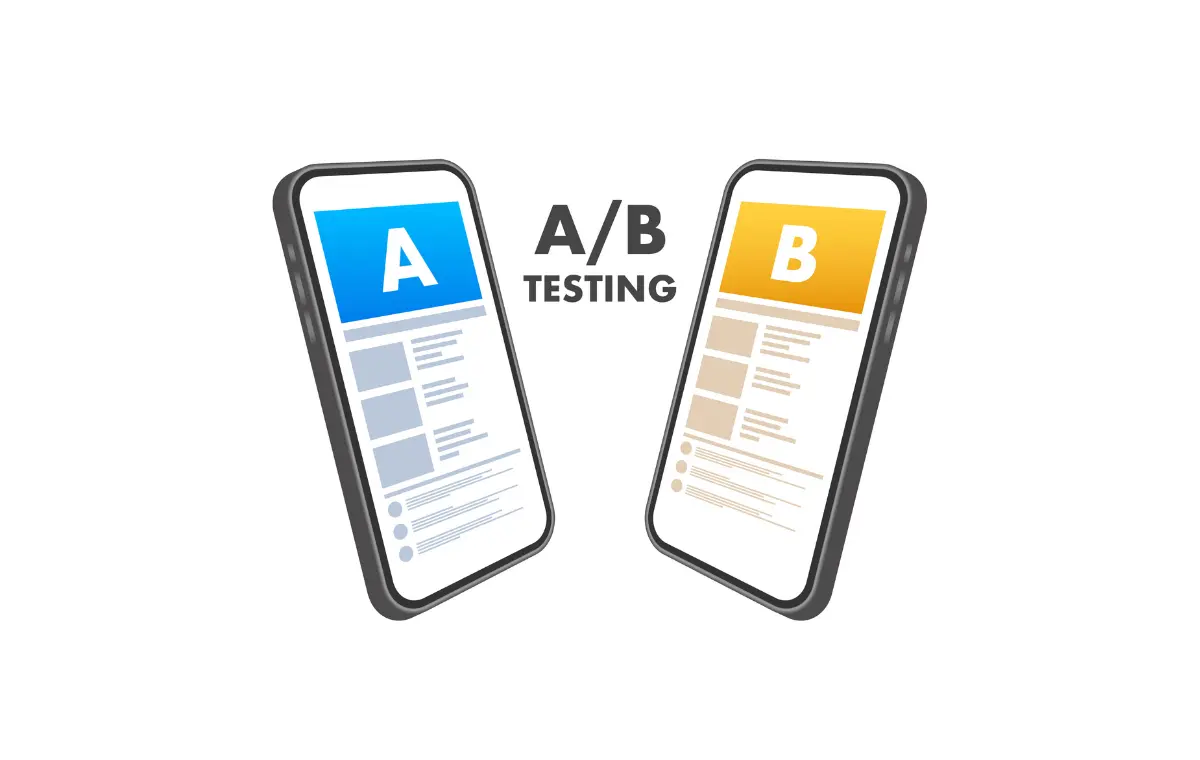Digital Marketing Conversions: Proven Strategies and Tips
In this guide, you will discover tested strategies to enhance your digital marketing conversion rates, a crucial indicator of how well your marketing efforts transform visitors into leads or customers who make purchases. This vital metric significantly influences revenue and your business’s growth by optimizing conversions within your marketing campaigns.
Key Takeaways
- Conversion Rate Optimization (CRO) focuses on increasing the percentage of website visitors who complete desired actions, directly impacting marketing ROI and business growth.
- Key metrics for tracking conversions include conversion rate, click-through rate (CTR), and cost per acquisition (CPA), which help assess and refine marketing strategies for better results.
- Strategies for improving conversion rates involve enhancing landing pages, conducting A/B testing, and leveraging social proof alongside technical optimizations like website speed, mobile optimization, and user experience design.
Understanding Digital Marketing Conversions

A business’s expansion and ongoing success are significantly influenced by the effectiveness of digital marketing in achieving conversions. When your website or advertisement yields a high conversion rate, it indicates that you are effectively compelling visitors to perform the intended action, which has direct positive effects on both revenue generation and return on investment (ROI). In an exceedingly competitive market environment, honing the efficacy of one’s marketing strategy through fine-tuning the conversion process is essential for business growth.
At its core, conversion marketing encompasses tactics within your digital arsenal designed to convert casual website browsers into leads or actual paying customers. It occupies a pivotal position in devising an online marketing strategy that can substantially enhance the following:
- The ROI derived from various marketing endeavors
- The capacity for businesses to inform their strategic decision-making processes
- Sustained commercial triumph through keen insights gained from understanding and refining conversion rates
By deploying strategies focused specifically on improving conversions—often referred to as “conversion rate optimization” (CRO)—businesses not only elevate their potential customer base but also make strides toward consistent profitability and organizational vitality. These efforts should prioritize engaging with users persuasively enough so they will take desired actions that contribute directly to company advancement and profitability milestones.
What is a Conversion in Digital Marketing?
Digital marketing encompasses various activities considered conversions, such as making a purchase, filling out a form, subscribing to a newsletter, downloading content, or scheduling a demo. Each of these actions reflects successful engagement with the user.
A key success metric in digital marketing is the conversion rate—the proportion of visitors who take the desired action on your website. A higher conversion rate implies that your website is aligned well with what users seek and desire.
The process dedicated to elevating this crucial metric is known as conversion rate optimization (CRO). It involves an ongoing effort to enhance your site’s different elements, which can improve overall user experience and consequently increase conversions.
Importance of Measuring Conversions
Measuring conversions is essential to gauge the success of marketing campaigns and pinpoint areas for enhancement. By monitoring conversion rates, you can:
- Assess the effectiveness of your marketing efforts
- Tweak strategies for improved outcomes
- Persistently optimize your promotional activities
- Better the user experience
- Boost income
Comprehending conversion rate statistics necessitates a grasp of one’s overarching business ambitions, intended market demographic, and employed promotional methods. It’s vital to understand these elements to decode conversion data accurately. This knowledge enables informed decision-making that supports business aims and augments conversions.
Key Metrics for Tracking Conversions
Concentrating on crucial metrics such as conversion rate, click-through rate (CTR), and cost per acquisition (CPA) is essential to monitor and enhance conversions effectively. These measurements offer a clear understanding of the performance of your marketing efforts and indicate where changes might be necessary to achieve an increased number of conversions.
Conversion Rate
The conversion rate represents the proportion of website visitors that take a specified action or fulfill an objective. To determine this figure, divide the total conversions by the aggregate number of site visitors and then multiply that quotient by 100. For example, if there are 50 conversions from 1,000 clicks, that equates to a conversion rate of 5%.
Across different industries, the typical average conversion rate stands around 2.35%, but it’s important to note variations might occur based on the particular industry and devices utilized. The pursuit for successful optimization in conversion rates requires a grasp of these benchmarks and an appreciation for critical metrics tied to conversions. Striking always to match or surpass standard expectations is vital.
Click-Through Rate (CTR)
Click-through rate (CTR) is an essential metric that calculates the frequency of clicks on links within emails or paid advertisements leading to your site, serving as a key indicator of the success of marketing efforts. When CTRs are elevated, it reflects that the content resonates and captivates your target audience—for instance, incorporating video thumbnails into email communications can potentially amplify CTR by a staggering 300%.
Developing engaging content, refining advertising copy for optimal appeal, and employing striking visual elements are crucial to elevating the CTR. Implementing these methods enhances link visibility and motivates increased clicking activity, which funnels additional traffic toward your website.
Cost per Acquisition (CPA)
CPA, or cost per acquisition, is an essential metric that gauges the expense involved in gaining a new customer via your marketing campaigns. This figure is based on the total marketing costs divided by the number of newly acquired customers.
By monitoring CPA in conjunction with return on marketing investment, you get an extensive perspective on how well your business is doing. Understanding CPA helps assess the efficiency of your marketing efforts and assists in fine-tuning expenditures to achieve better outcomes.
Strategies for Improving Conversion Rates
Improving your conversion rates involves a combination of strategic tactics and practical steps. By optimizing landing pages, engaging in A/B testing, and leveraging social proof, you can successfully elevate your conversion rates for superior marketing results.
Enhancing Landing Pages
Enhancing your landing pages is essential for boosting conversion rates. Crafting a clear and straightforward page with persuasive call-to-action (CTA) buttons can significantly impact the number of conversions. By eliminating navigation obstacles and thoughtfully positioning elements like images, videos, and CTAs, you foster a smooth user journey that prompts visitors to respond favorably.
Employing tactics such as heatmap analysis and A/B testing is instrumental in pinpointing potential enhancements on your landing pages. Superior design coupled with the tactical placement of features is crucial in increasing user involvement and achieving more conversions through successful lead generation efforts.
A/B Testing

A/B testing involves comparing two web page versions to see which results in a better conversion rate. By experimenting with different features, such as headlines, call-to-action (CTA) buttons, images, colors, and page layouts, businesses can identify the version that leads to more conversions.
With platforms like Optimizely available for real-time A/B testing implementation, companies can make informed decisions about website enhancements without needing proficiency in coding. Continuous application of A/B tests streamlines the optimization process and will likely enhance outcomes effectively.
Utilizing Social Proof
Social proof, such as reviews and testimonials, fosters trust and stimulates conversions. By featuring top-rated and best-selling products within your marketing efforts, you can capitalize on social proof to boost conversion rates.
To amplify credibility and generate more conversions, brands should focus on:
- Building a strong profile on review platforms like Trustpilot and Yelp
- Interacting with consumers via various social media channels
- Incentivizing loyal customers to become advocates for the brand
Employing these tactics will likely enhance conversion rates across different touchpoints.
Role of Content in Driving Conversions
Creating high-quality content has the potential to increase conversion rates significantly. By developing engaging CTAs, compelling blog posts, and incorporating video materials, you can build trust and credibility with your audience while piquing their interest. This approach not only grabs the attention of website visitors but also encourages them toward more effective conversions by fostering a sense of desire.
Creating Compelling Calls to Action (CTAs)
CTAs are crucial in propelling conversions forward. They must employ precise, commanding language that steers users toward the desired action. Incorporating verbs such as ‘discover’ or ‘find’ that spur action can boost user involvement, prompting them to take steps.
CTAs need to be located where users tend to concentrate their attention—for example, beneath persuasive text or following a detailed product description. To Induce user activity and enhance conversions, creating a sense of urgency with limited-time deals and countdown clocks taps into Fear-Of-Missing-Out (FOMO) psychology.
Engaging Blog Posts
Captivating blog content is essential for drawing in and keeping an audience. A persuasive headline is key to immediately capturing interest and conveying the essence of the article effectively, which is vital for both attracting new readers and keeping them engaged. Detailed and meticulously researched posts build credibility and entice visitors to delve deeper into your site.
Conducting comprehensive keyword research along with strategic placement within the content can boost online presence and reach appropriate audiences, which can lead to higher conversion rates.
Leveraging Video Content

Engaging audiences and increasing conversions is highly successful with video content. Utilizing various forms of videos, including tutorials, product demonstrations, and customer reviews, can captivate viewers’ attention.
Adhering to top strategies for producing video content—like maintaining brevity in the videos while providing high-quality production—can amplify their impact. For example, ASOS employs 360° view videos on its merchandise pages to improve the user experience and spur conversions.
Technical Aspects of Conversion Optimization
The technical elements of conversion optimization such as site speed, adaptability for mobile devices, and user experience (UX) design, are crucial to creating fluid and easily navigable user paths. These components significantly impact the behavior of users and their corresponding conversion rates.
Website Speed and Performance
Maintaining and improving the speed of your website is crucial for keeping visitors engaged and amplifying chances for conversions. For instance, Amazon discovered that a mere 100 ms increase in page loading time resulted in a sales decrease of 1%.
To trim load times, it’s advisable to fine-tune image sizes, implement a Content Delivery Network (CDN), and activate caching. Such enhancements are instrumental in elevating the efficiency of your site, which can lead to elevated conversion rates.
Mobile Optimization
In the current digital environment, to capture mobile traffic and boost conversions effectively, it’s essential to optimize for mobile devices. OffSpring is a prime example of this success. They experienced an increase in sales by 102% following their transition to a mobile-responsive website.
Ensuring that your website caters well to mobile users can significantly improve the user experience and drive more conversions.
User Experience (UX) Design
Investing in UX design is crucial for molding visitors’ perceptions and swaying their decision to convert. A webpage layout that is both seamless and intuitive retains the engagement of potential customers, increasing the chances of conversion.
Incorporating high-quality visuals, such as videos, can elevate a casual browser’s experience into that of a committed customer by enriching user engagement. To cater to mobile users effectively, it’s important to provide clear navigation and minimize any obstacles within the user experience.
Analyzing and Interpreting Conversion Data
Employing resources like Google Analytics, heatmaps, and session recordings to scrutinize and decode conversion information assists companies in crafting data-informed choices to refine their marketing strategies.
Tools for Tracking Conversions
Instruments such as Google Analytics are crucial in monitoring website performance and evaluating traffic patterns. Through session recordings, one can gain insights into users’ browsing habits and discern their interests, which is instrumental in refining the user experience.
Enterprises have at their disposal tools like Optimizely to facilitate:
- Execution of immediate A/B comparisons
- Informed choices about website enhancements without needing expertise in coding
- Observation of both new and repeat clients to deliver an all-encompassing perspective on the consumer journey
This provision paves the way for enhanced tactical decision-making.
Making Data-Driven Decisions
Analyzing conversion data to inform decisions can lead to more successful marketing strategies and improved conversion rates. Using tools like heatmaps, which illustrate user engagement on web pages, offers critical insights that aid in optimizing those pages.
Employing a strong conversion rate optimization (CRO) strategy based on this analysis is key for enhancing user experience and achieving business goals, thereby increasing conversions.
Case Studies of Successful Conversion Strategies
Case studies from actual scenarios reveal verified methods and strategies that can be duplicated to enhance conversion rates. These instances underscore the effective tactics adopted by diverse companies.
Example 1: E-commerce Site Optimization
Bear Mattress serves as a prime example of optimizing an e-commerce website effectively. By integrating compelling imagery, customer-focused text, and a revamped layout for cross-selling products, Bear Mattress saw its purchases soar by 24.18%. These improvements made the shopping journey more interactive and streamlined, boosting conversion rates.
In parallel to this approach is Amazon’s strategy, which significantly boosted its sales figures through personalized product suggestions that were aligned with user behavior patterns. This customization in the shopping experience not only kept users coming back but also promoted recurrent buying actions, demonstrating how powerful customized recommendations are within the e-commerce industry.
Example 2: Effective Email Campaigns
Dollar Shave Club serves as an exemplary model of successful email marketing campaigns. By segmenting their email lists and sending customized messages to distinct groups of customers, they accomplished a remarkable 50% uplift in conversion rates. Their strategy hinged on ensuring that every message was attuned to its recipients’ particular interests and activities.
The company’s crafted communications effectively met the individual demands of each customer segment, elevating the relevance and influence of their outreach efforts. This method highlights how essential personalization is within email marketing strategies aimed at enhancing conversions.
Example 3: Social Media Engagement
Utilizing social media platforms to bolster their digital marketing efforts, Starbucks effectively enhanced customer connection through interactive polls and engaging content. This approach resulted in a dynamic and immersive experience for their audience on social media.
The targeted engagement led to a significant increase in app downloads for the brand, demonstrating how strategic use of social media can propel conversions and elevate customer interaction levels. The success experienced by Starbucks underscores the critical role that compelling content plays within social media channels as part of a robust digital marketing strategy aimed at improving conversion rates.
Summary
In this blog post, we delved into the crucial elements of digital marketing and its role in generating conversions. This includes an understanding of what constitutes a conversion and how to track and refine these occurrences. Essential metrics such as conversion rates, click-through rates (CTR), and cost per acquisition (CPA) provide deep insights into how well your marketing endeavors are performing. Tactics like improving landing pages, conducting A/B tests, and leveraging social proof play a vital role in elevating conversion rates.
The creation of high-quality content alongside technical enhancement and making choices based on data is fundamental for fostering conversions that lead to business expansion. Examining successful case studies can offer practical guidance. By implementing these tried-and-true methods, businesses can maximize their potential for converting visitors while bolstering overall marketing efficiency. It’s important not to forget that ongoing optimization coupled with tactical decision-making remains essential for maintaining prosperity over time.
Are you ready to boost your digital marketing conversions? Chat with our experts at Timmermann Group and discover how we can help you achieve your goals. Let’s turn your visitors into loyal customers.
Frequently Asked Questions
What is a conversion in digital marketing?
In digital marketing, a conversion occurs when someone visiting a website completes a desired action, such as purchasing something or subscribing to a newsletter. This allows companies to assess the success of their online activities.
Why is measuring conversions important?
Understanding the success of your marketing endeavors is critical, and tracking conversions plays a pivotal role in this process. It enables you to pinpoint where enhancements are needed and fine-tune tactics for better user engagement, ultimately leading to heightened sales and revenue growth.
What are the key metrics for tracking conversions?
Conversion rate, click-through rate (CTR), and cost per acquisition (CPA) constitute crucial metrics to monitor conversions. They are vital for evaluating the success of marketing efforts and refining strategic approaches.
How can I improve my website’s conversion rate?
Concentrating on the refinement of landing pages, carrying out A/B testing, leveraging social proof, crafting persuasive CTAs (Call To Action), and maintaining a smooth user experience are essential practices to heighten your website’s conversion rate.
Implementing these approaches can increase your website’s conversion rate and result in more favorable results for your online presence.
What role does content play in driving conversions?
Driving conversions is heavily reliant on the presence of high-quality content, which establishes trust and credibility while fostering a sense of desire in website visitors. This results in an increase in conversion rates.
Utilizing persuasive CTAs, captivating blog articles, and dynamic video content can profoundly influence the ability to drive conversions.

